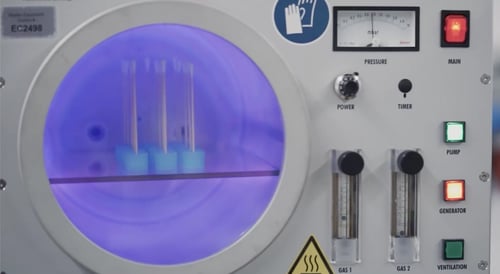
Generally, the surface energy of metals, ceramics and glass is higher than that of plastics. Nevertheless, there are also applications where these materials benefits from plasma activation.
Generally, the surface energy of metals, ceramics and glass is higher than that of plastics. Nevertheless, there are also applications where these materials benefits from plasma activation. The surface tension of solder alloys is likewise high, they roll off many metal surfaces. Therefore, plasma activation of metals can also improve wetting during soldering.
However, activation of metals is highly unstable and thus has a short duration of action. Once metal has been activated, further processing (gluing, painting....) must take place within the next minutes or hours because contaminations from the ambient air will become attached to the surfaces fast and permanently.
Metal activation makes sense before processes such as soldering or bonding.
To learn more about the use of plasma in manufacturing, please read our eBook titled "Manufacturer’s Surface Activation Guide for Improved Adhesion."
Plasma: +1 (248) 761 9253
Distribution: +1 (248) 549 8600
Fax: +1 (248) 549 3533
info@thierry-corp.com